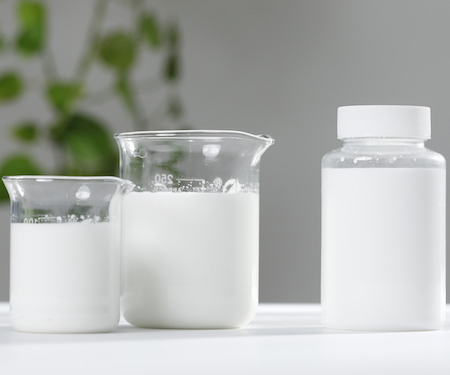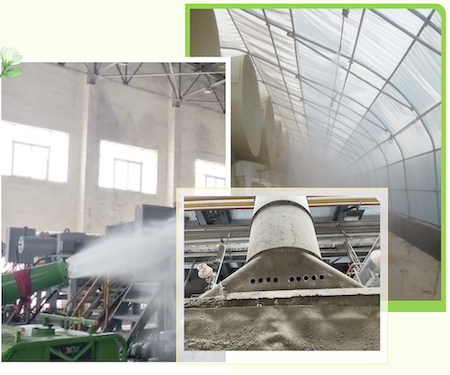
media coverage
Staff at landfills and incineration plants say:
“We can chat while standing around - no more masks glued to our faces!”
Wastewater plant inspectors say:
“I can finally take off my mask during rounds - fresh air, smooth breathing, and the breeze on my face - it’s a whole new feeling!”
Even the livestock are feeling it:
“The air’s fresher, food tastes better, and our weight scales are working overtime!”
Residents near chemical plants report:
“Complaints? A thing of the past! Opening the windows is pure joy now.”
Why?
Because we've introduced a nature-powered solution to protect clean industrial environments - Polymer Plant-Based Deodorizer.
Harnessing the power of plants, POLYMER takes direct aim at the worst odor offenders:
- Hydrogen sulfide, the notorious "rotten egg" smell
- Ammonia, the sharp, pungent irritant
- Methyl mercaptan and methyl ether, the dizzying top-tier odor agents
Through cutting-edge botanical science, Polymer delivers a safe, eco-friendly, and highly effective deodorizing solution - ensuring cleaner air and a more sustainable industrial future.
Part I : "Guardian of Freshness" - Plant-Based Extract Formula
- Formulated with a synergistic blend of natural plant extracts derived from fruit peels, stems, and leaves
- Milky white liquid with stable consistency
- Shelf life: 12 months
- Applied via compatible smart atomization equipment, with mist particle size ranging from 1 to 10μm
- Dilutable at a ratio of 1:100 to 1:300 as needed
- Reacts chemically with odor molecules in the air to neutralize and eliminate unpleasant smells
Part II: Certified Safety & Proven Efficacy
- Odor neutralization, not masking
- Effectively eliminates over 90% of key odor compounds such as hydrogen sulfide, ammonia, methyl mercaptan, and dimethyl sulfide
- Registered and recognized by the U.S. Food and Drug Administration (FDA)
- Demonstrates strong antimicrobial activity against E. coli, Candida albicans, and other harmful microorganisms
- Passed acute dermal irritation tests - classified as non-irritating
- Passed acute oral toxicity testing - determined to be practically non-toxic

Part III: Decoding Industry Pain Points
Eco-Friendly Precision: Safer than chemical methods - non-irritating, non-corrosive, and certified through ecotoxicity testing.
Rapid Molecular Breakdown: More effective than physical methods - breaks down odor molecules rather than merely adsorbing them, eliminating the risk of secondary pollution.
Fast-Acting Odor Solution: Outperforms biological treatments in speed - results visible within 30 minutes, ideal for high-concentration odor scenarios.
Part IV: Proven Application Matrix
Applicable Industries & Facilities:Landfills, waste incineration plants, waste transfer stations, wastewater treatment facilities, paper mills, leather processing plants, chemical factories, food processing enterprises, and livestock farms.
Waste Incineration Power Plant
At a large-scale waste-to-energy plant, severe odor issues were present in key areas such as the garbage bridge, waste unloading hall, and waste pre-treatment workshop. The odor was diffusely emitted without containment, affecting an area of 100,000㎡.
Treatment Outcome: Odor concentration was reduced by over 80%, with long-term maintenance of plant boundary odor levels below 20 (dimensionless unit).
Chemical Plant
At a fine phosphate manufacturing facility, the primary odor compounds in the production area included organic amines and aldehydes. Although deodorization via spray scrubbing was applied in 15 workshops (handling a total exhaust volume of 115,000 m³/h with an initial odor concentration of 6,000), strong odors remained noticeable throughout the plant.
Treatment Outcome: Post-treatment odor concentration at the emission outlet was reduced to below 2,000 (dimensionless), and odor complaints from surrounding residents dropped to zero.
Livestock Farm
At a large-scale pig farm raising over 11 million pigs annually, severe odors were emitted during ventilation of pig housing units. Key odor components included organic amines, hydrogen sulfide, and thiols. No deodorization measures were previously in place.
Treatment Outcome: Odor levels were reduced by more than 80%, with long-term plant boundary odor concentrations maintained below 20 (dimensionless).

Part V: Comprehensive Service Ecosystem
- Free on-site assessment
- Tailor-made solution design
- Professional installation and commissioning
- Operator training and guidance
- Regular performance monitoring
When waste management workers can breathe freely, when animals in livestock farms grow healthier in cleaner air, when residents near chemical plants feel safe to open their windows again, POLYMER is redefining clean production with measurable, nature-powered odor control.
20 years of expertise in industrial deodorization
200+ proven application cases
24/7 technical support and rapid response
Get your customized odor control solution today.